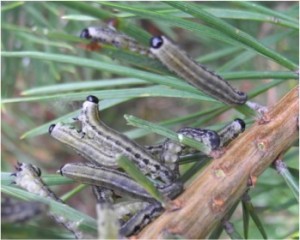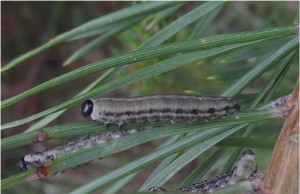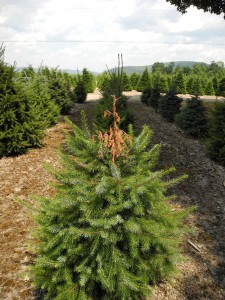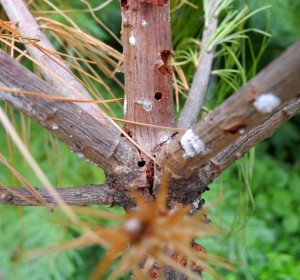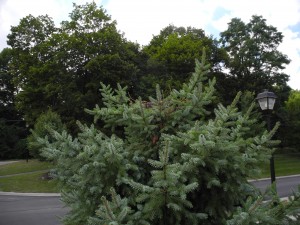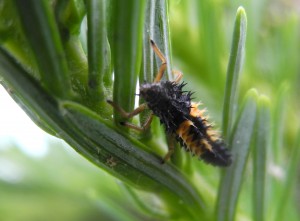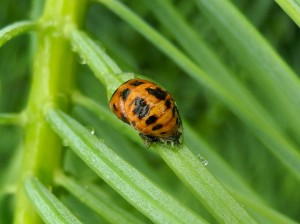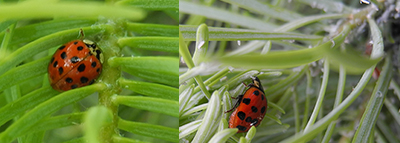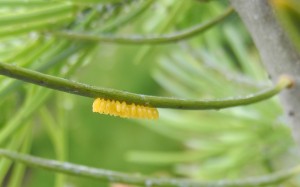Pine Sawflies
Notice needle damage on pine trees? Look close. It may be caused by conifer-feeding sawflies.
Sawflies? As larvae they look caterpillars which might develop into moths, their name implies they’ll be flies, but they actually become non-stinging wasps as adults. And the saw? As adult wasps the females cut slits in pine needles with saw-like structures on the tip of their abdomens and lay eggs into these openings.
Checkout the synchronized movement they make to deter predators!
Although there are several species of sawflies that can be seen on conifers the gray-green European Pine Sawfly (Neodiprion sertifer) is represented in this post.
Sawfly Management
- Monitor to detect infestations before they reach a size that can cause significant needle loss.
- Know that sawfly larvae are attractive as food to parasites and predators and are usually kept in check by these natural enemies.
- If a small outbreak occurs they can often be handpicked, or pruned out and destroyed.
- For rare situations where the population of sawflies are high insecticides labeled for their control can be used.


